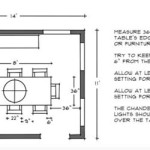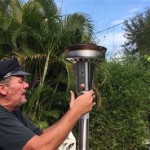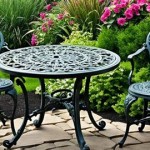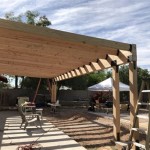How To Resurface a Stamped Concrete Patio
Stamped concrete patios offer a durable and aesthetically pleasing outdoor space. However, over time, exposure to the elements, heavy foot traffic, and general wear and tear can degrade the surface, leading to fading, cracking, and a generally unappealing appearance. Resurfacing stamped concrete can restore its original beauty and extend its lifespan, providing a revitalized outdoor living area. This process generally involves cleaning, repairing any damage, and applying a new surface coating or overlay. A successful resurfacing project requires careful planning, the proper materials, and adherence to established techniques.
Before initiating the resurfacing process, it's crucial to accurately assess the condition of the existing stamped concrete patio. This assessment will dictate the necessary repairs and the most suitable resurfacing method. Factors to consider include the extent of cracking, the presence of spalling (surface flaking), fading of the original color, and any pre-existing coatings or sealers. A thorough inspection allows for accurate material estimation and helps prevent unexpected complications during the project.
Safety is paramount during any home improvement endeavor. Proper protective gear, including safety glasses, gloves, and a dust mask or respirator, is essential, especially when working with concrete dust or chemicals. Ensuring adequate ventilation is also crucial when using solvent-based sealers or cleaning agents. Furthermore, the work area should be clearly marked to prevent accidental entry by pets or children.
Key Point 1: Preparation is Paramount
Proper preparation is the foundation of a successful stamped concrete resurfacing project. This phase involves cleaning the existing surface, repairing cracks and imperfections, and ensuring a suitable bonding surface for the new overlay. Neglecting any of these steps can compromise the integrity and longevity of the resurfaced patio.
The initial step is a thorough cleaning. Remove all furniture, potted plants, and other obstructions from the patio area. Sweep away loose debris, dirt, and leaves. A pressure washer is highly effective for removing stubborn stains, mildew, and algae. Use a wide fan nozzle to avoid damaging the concrete surface. Adjust the pressure to a level that effectively cleans without etching or gouging the stamped pattern. If necessary, use a concrete cleaner or degreaser to remove oil stains or other contaminants. Follow the manufacturer's instructions for application and rinsing.
Once the surface is clean and dry, inspect it closely for cracks. Hairline cracks may not require immediate attention, but larger cracks should be addressed to prevent further damage. Clean out loose debris from the cracks using a wire brush or a crack chaser tool. For minor cracks, a concrete patching compound or epoxy crack filler can be used. Apply the patching compound according to the manufacturer's instructions, ensuring it is fully compacted into the crack. For larger cracks, consider using a concrete repair mortar formulated for structural repairs. These mortars typically require proper mixing and application techniques to ensure a strong and durable repair. Allow the patching compound or repair mortar to cure completely before proceeding to the next step.
Depending on the condition of the existing sealer, it may be necessary to remove it before applying the new overlay. Old, peeling sealer can prevent proper adhesion and lead to premature failure of the resurfacing material. Several methods can be used to remove sealer, including chemical strippers, mechanical grinding, or abrasive blasting. Chemical strippers are often effective for removing acrylic or solvent-based sealers. Apply the stripper according to the manufacturer's instructions, allowing it to dwell for the recommended time before scraping away the softened sealer. Mechanical grinding involves using a concrete grinder with a diamond grinding wheel to remove the sealer. This method is generally more effective for removing thicker or more durable sealers. Abrasive blasting, such as sandblasting, can also be used to remove sealer, but it can be more aggressive and may damage the underlying concrete if not performed carefully.
After cleaning, repairing cracks, and removing any existing sealer, it's essential to prepare the surface for bonding. This typically involves applying a concrete bonding agent or primer. Bonding agents improve the adhesion between the existing concrete and the new overlay, preventing delamination and ensuring a long-lasting bond. Choose a bonding agent specifically designed for concrete resurfacing. Apply the bonding agent according to the manufacturer's instructions, typically using a brush, roller, or sprayer. Allow the bonding agent to become slightly tacky before applying the overlay.
Key Point 2: Selecting and Applying the Overlay
Choosing the correct overlay material is critical for achieving the desired aesthetic and functional outcome. Various overlay options are available, each with its own characteristics, advantages, and disadvantages. The choice depends on the desired look, the existing concrete's condition, and the budget constraints.
One popular option is a concrete microtopping, a thin cement-based overlay that creates a smooth, seamless surface. Microtoppings are typically applied in thin layers, allowing for precise color and texture control. They can be stained, dyed, or integrally colored to achieve a wide range of aesthetic effects. Another option is a stamped concrete overlay, which mimics the look of new stamped concrete. These overlays are typically thicker than microtoppings and are applied using stamps to create the desired pattern. Stamped overlays can be customized with various colors, patterns, and textures to match the existing stamped concrete or create a completely new look.
A spray-on concrete overlay is another viable choice. These overlays are typically applied using a hopper gun or sprayer, creating a textured or patterned surface. Spray-on overlays are often used to create decorative borders or accents. Self-leveling concrete overlays are designed to create a smooth, level surface. These overlays are poured onto the existing concrete and allowed to flow and self-level, filling in any imperfections and creating a flat, even surface. Self-leveling overlays are often used as a base for other types of overlays or as a finished surface in themselves.
Once the overlay material has been selected, it’s necessary to follow the manufacturer's instructions for mixing and application. Proper mixing is crucial for achieving the desired consistency and workability. Use a concrete mixer or a drill with a mixing paddle to thoroughly combine the overlay material with water or the recommended liquid admixture. Add the liquid gradually, mixing until the mixture is smooth and free of lumps. Avoid adding too much liquid, as this can weaken the overlay and make it more prone to cracking.
Apply the overlay material according to the manufacturer's instructions, using a trowel, squeegee, or sprayer. For microtoppings, apply the material in thin, even layers, using a trowel to smooth the surface. For stamped overlays, apply a thicker layer of material and use stamps to create the desired pattern. Work in small sections, overlapping each section slightly to create a seamless finish. For spray-on overlays, use a hopper gun or sprayer to apply the material in a uniform pattern. Adjust the nozzle and air pressure to achieve the desired texture. For self-leveling overlays, pour the material onto the existing concrete and use a gauge rake or smoothing tool to distribute it evenly. Allow the material to flow and self-level, filling in any imperfections. If using stamps, ensure they are properly cleaned between each impression to maintain crisp patterns.
Key Point 3: Curing and Sealing for Longevity
Proper curing and sealing are essential for maximizing the durability and longevity of the resurfaced stamped concrete patio. Curing allows the overlay material to hydrate and harden properly, while sealing protects the surface from moisture, stains, and wear and tear. Neglecting these steps can compromise the integrity and appearance of the resurfaced patio.
Curing involves maintaining adequate moisture levels in the overlay material during the initial hardening period. This prevents the concrete from drying out too quickly, which can lead to cracking and reduced strength. Several methods can be used to cure concrete, including water curing, membrane curing, and plastic sheeting. Water curing involves keeping the surface damp by spraying it with water periodically. This method is particularly effective for small areas. Membrane curing involves applying a liquid curing compound to the surface, which forms a waterproof membrane that prevents moisture evaporation. Membrane curing is often used for larger areas. Plastic sheeting involves covering the surface with plastic sheeting to trap moisture and prevent evaporation. Follow the manufacturer's instructions for the curing compound or sheeting.
The duration of the curing period depends on the type of overlay material and the ambient temperature and humidity. Generally, a curing period of at least three to seven days is recommended. Avoid walking on the resurfaced patio during the curing period. After the curing period is complete, the patio can be sealed. Sealing protects the surface from moisture, stains, and wear and tear. It also enhances the color and appearance of the stamped concrete. Several types of concrete sealers are available, including acrylic sealers, epoxy sealers, and polyurethane sealers.
Acrylic sealers are a popular choice for stamped concrete patios due to their ease of application and affordability. They provide a good level of protection and enhance the color of the concrete. Epoxy sealers offer excellent durability and chemical resistance, making them suitable for high-traffic areas. They also provide a glossy finish. Polyurethane sealers offer the highest level of protection against abrasion, chemicals, and UV damage. They are more expensive than acrylic or epoxy sealers but provide the longest-lasting protection. Choose a sealer specifically designed for stamped concrete. Apply the sealer according to the manufacturer's instructions, typically using a roller, sprayer, or brush. Apply the sealer in thin, even coats, allowing each coat to dry completely before applying the next. Two coats of sealer are typically recommended for optimal protection.
The frequency of resealing depends on the type of sealer used and the level of traffic and exposure to the elements. Acrylic sealers typically need to be reapplied every one to two years, while epoxy and polyurethane sealers can last for several years before requiring resealing. Regularly inspect the sealer for signs of wear and tear, such as scratches, peeling, or fading. Clean the patio regularly to remove dirt, debris, and stains. Avoid using harsh chemicals or abrasive cleaners, as these can damage the sealer. By following these tips, the resurfaced stamped concrete patio can maintain its beauty and durability for years to come.

How To Resurface Stamp Concrete Super Stone Surface

3 Concrete Resurfacing Options For Patio

Refurbishing Stamped Concrete Construction

Renovate Your Concrete For A More Graceful Appearance Royal Resurfacing

Concrete Resurfacing Tutorial Countertop Experts
Refurbishing Stamped Concrete Construction

Concrete Stamping Over Existing Solomon Colors

Restoring Color To A Stamped Concrete Patio

Stamped Concrete Overlays Easier To Install Less Costly Than Conventional Way Decor

Stamped Concrete Resurfacing Wesley Chapel Fl








